I have been writing about dental implants for quite a few years now, but I noticed there is very little information out there about what the dental implant experience is really like from a patient’s perspective. Much of the information is published by dental clinics, and it tends to be reassuring rather than descriptive.
So, having recently got two dental implants myself, it’s only natural for me to want to write about what it was like!
Of course, what follows is just my personal experience of getting dental implants. It’s not going to be the same for everyone, since a lot will depend on the exact details of your treatment. But for anyone about to undergo this surgery, I hope it provides some insight and reassurance about what to expect.
First, some background.
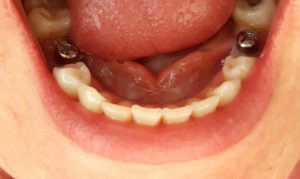
I have a condition called hypodontia, which means I was missing some of my adult teeth. My bottom second premolars (the fifth ones back), to be precise. Since these teeth never came through, the baby teeth in that position never fell out. There were two consequences to this:
- I was left with two teeth in my mouth that had been there for 30+ years when they’re only supposed to last for 10
- Those two baby teeth are larger than the adult teeth that are supposed to replace them, so my bottom teeth were crooked from overcrowding.
With these two teeth full of fillings and falling apart, I was starting to worry about chewing on them in case I caused more damage. I’d had enough and decided to get them extracted so I could straighten my other teeth and then get implants.
The extractions were pretty horrible – turns out the teeth were much stronger than I’d realised – but I recovered after a week or so. Then I got metal braces fitted to my bottom teeth, and a year later they were much straighter.
So, onto the part you came here for: getting teeth implants. The photos I have included show what the implants looked like at each step, although dentist’s chair selfies don’t produce great quality pictures!
My dental implants experience step-by-step
1. Consultation and x-ray
The first step was to have a consultation with my implant dentist. He checked my panoramic x-ray and confirmed that I was a good candidate for dental implants and still had sufficient bone following my extractions.
After this, I’ll be honest, I put off making the appointment to actually get the implants placed. Why? I was super nervous about how it would feel. I knew it all in theory, but actually letting someone drill into my jawbone was another matter. Anyway, I finally decided to get on with it.
2. Implant placement
I booked a morning appointment so that I wouldn’t have to wait too long on the day. They were, unusually, running 25 minutes late, which didn’t help the nerves. The dentist showed me the implants inside their individually sealed little cases. They looked bigger than I’d imagined!
So, how painful is it to get dental implants?
The most painful part was actually the anaesthetic injections. Although the dentist used a numbing gel on my gums first, the needle went far deeper than that and he was quite thorough making sure he’d covered everywhere. So, I was squirming in the chair through that.
Once the anaesthetic took effect, there was no pain at all from having the implants placed. It was just quite unpleasant, especially the feeling of him slicing into my gums. Not painful, but bad enough just knowing what was going on in there.
After that, the dentist drilled the hole for the first implant. This felt similar to having a tooth drilled for a filling, except the pressure was much stronger. I can imagine the upper jaw might be worse, since the sound and vibrations would be stronger.
Then, the implant was screwed into place. Again, a weird sensation when he tightened it up but no pain at all. The second one was placed on the other side, and then the gum was stitched up around each one. Both implants were capped, so I had little bits of metal sticking out of my gums.
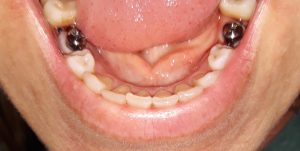
The whole process took about 40 minutes, and then I was sent home with some painkillers and anti-inflammatory medicine, which I took immediately.
3. Immediate recovery
I was expecting that I would need to take the pain medication for several days following the implant surgery, so I was surprised to wake up the next day with no pain or swelling whatsoever.
I stuck to very soft foods for a few days to avoid doing any damage to the healing gum tissue, but I didn’t experience any pain after having my dental implants placed.
My dentist also prescribed an antiseptic mouthwash containing chlorhexidine, which helps reduce bacteria and calm inflammation. I rinsed with this twice daily, after brushing my teeth.
After a week, I had another appointment to check the gums were healing ok – which they were – so the stitches could be removed.
Then, it was just a case of waiting three months to allow time for the dental implants to fuse with the bone.
With the healing caps in place, I could eat more or less as normal, just being careful not to chew on anything too hard in that area. I found it very useful having an Oral-B electric toothbrush with a brush head small and precise enough to clean the sides of my teeth next to the implant site without irritating the still-sensitive gum area.
4. Placing the crowns
An x-ray at my next appointment confirmed that everything was looking good, and it was time to place the crowns. The dentist took impressions of my teeth, after attaching extension parts to the implants called copings. Dental casts were then fabricated and used to shape the crowns.
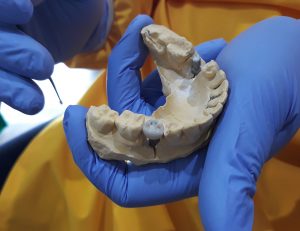
Five days later I went back for the final step in the process – fitting the ceramic crowns.
No anaesthetic this time. The dentist just unscrewed the protective caps and placed the crowns in the gaps. Before they were tightened, he made a couple of refinements for a better fit.
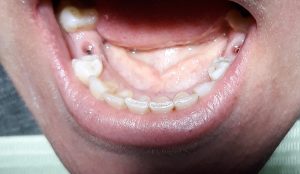
The pressure of having the crowns screwed into place was uncomfortable, but not painful. The dentist used filling material to fill the holes above the screws, and that was it!
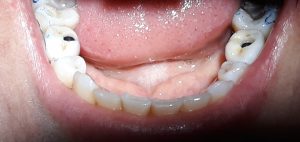
5. Maintenance
Dental implants are intended to be very long-lasting, but they do require a certain level of care, especially when it comes to maintaining healthy gums.
A dental implant root is narrower than a natural molar tooth, so there is more space where food particles and bacteria can get trapped below the crown. This means that twice-daily brushing and daily flossing is important.
Not being a fan of traditional dental floss, I have found a water flosser to be much more convenient. If you’re planning to invest in a water flosser after getting implants, I recommend choosing one which has a softer tip designed for cleaning around dental restorations. Also make sure it has variable speed settings, since the gum around your implant can remain sensitive for a while.
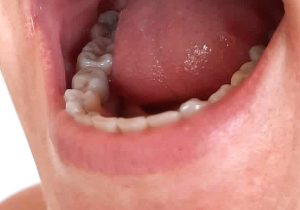
Final thoughts on getting teeth implants
So, that was my dental implants experience. The only painful part was the anaesthetic injections, and the recovery was far quicker than I’d expected.
I know that other people do experience pain and swelling for days – sometimes weeks – after having teeth implants placed. But I hope my account gives some assurance that it’s not always that bad!




